Week 2: What is this thing called HCI?
For week two, we were joined by Reem Talhouk and Kellie Morrissey. In the session we started by sharing with each other some of the papers found during the week before that were felt to “exemplify HCI”. This first activity placed paired people together as an “A” and “B”, with those who were “A” having 4 minutes to talk to “B” about the paper they had found, focusing on who it was by, what it was about, what was interesting, important and useful about the paper and, most importantly, why it exemplified HCI to them. During this 4 minutes, “B” has to make lots and lots of notes. After this, “B” had to find a new “A” and the process was repeated, with “B” explaining the paper they just found out about to their new partner. Again, the new “A” had to make lots and lots of notes. Again, once finished people met in a new pair once again and this time “A” explained to their new “B” partner the paper they had just found out about.
This “CHInese whispers” activity was meant to be quite playful, but also show how difficult it can be to coherently explain something in 4 minutes and how it is even harder to listen carefully and remember what you’ve just been told!
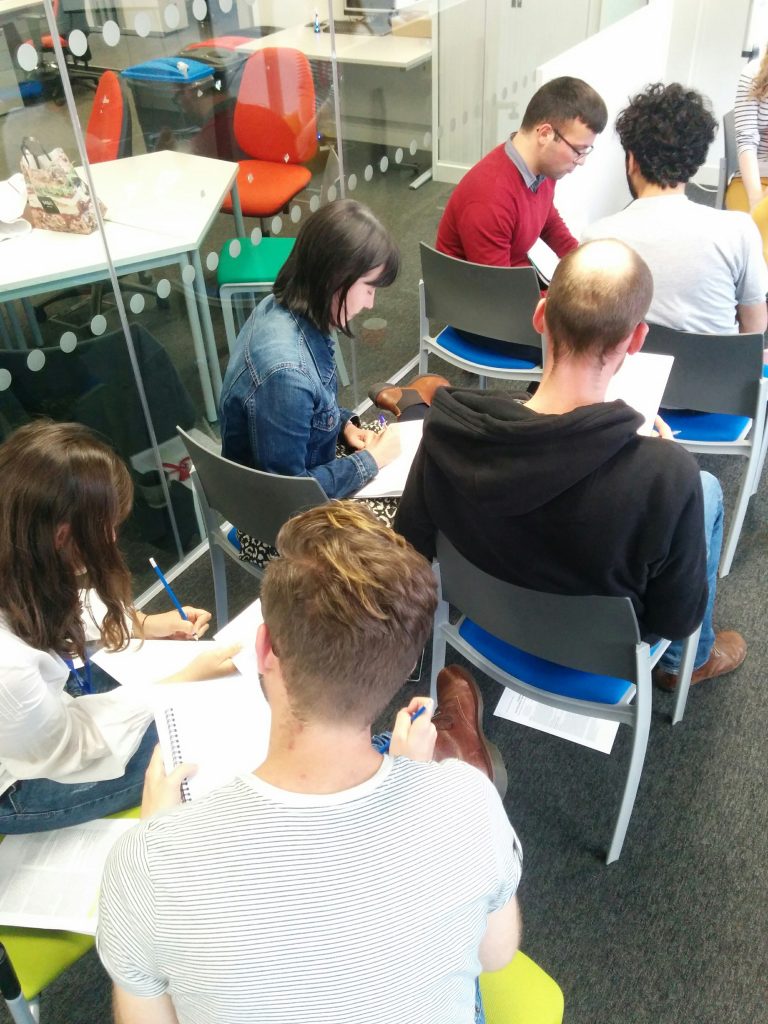
For the second main activity everyone found the reading groups set the week before. The groups were asked to spend some time sharing with each their different interpretations and readings of the paper they had been set. Having shared within their group their different views on the work, each group was asked to create a “visual poster” that captured their discussion and to prepare a five minute presentation back to the group. At the end of the session, each group presented back to everyone.
Group 1: Sean, Alex and Shichao (Staying Open to Interpretation)
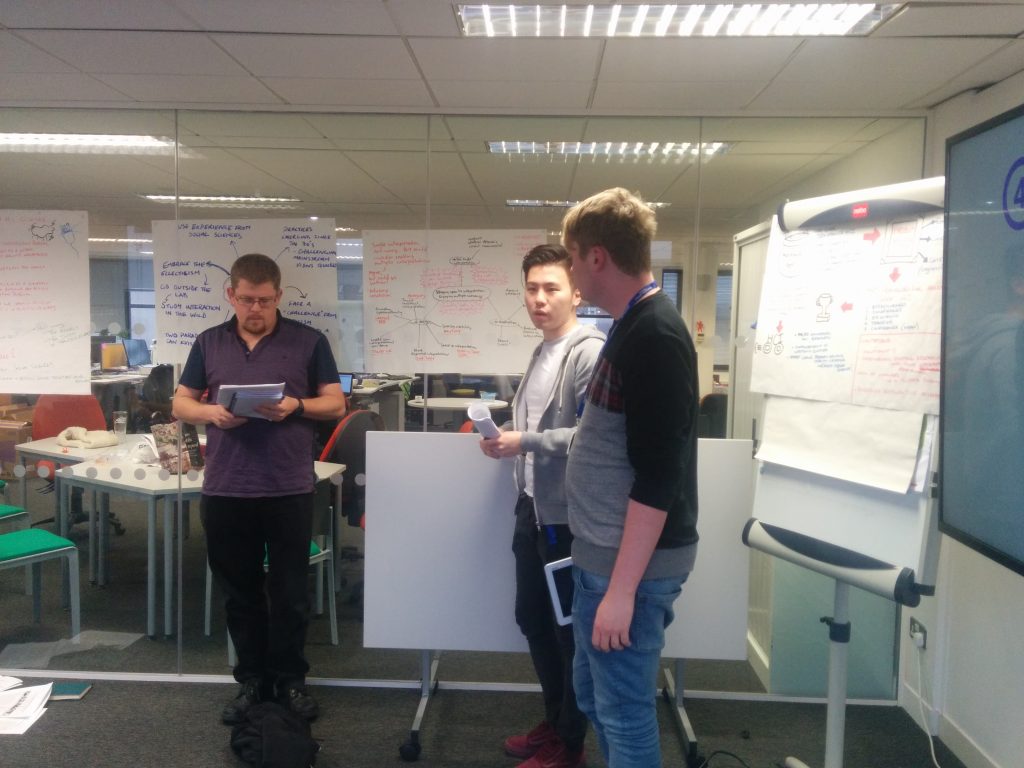
 Group 2: Dalya, Sarah and Lydia (HCI Research as Problem Solving)
Group 2: Dalya, Sarah and Lydia (HCI Research as Problem Solving)
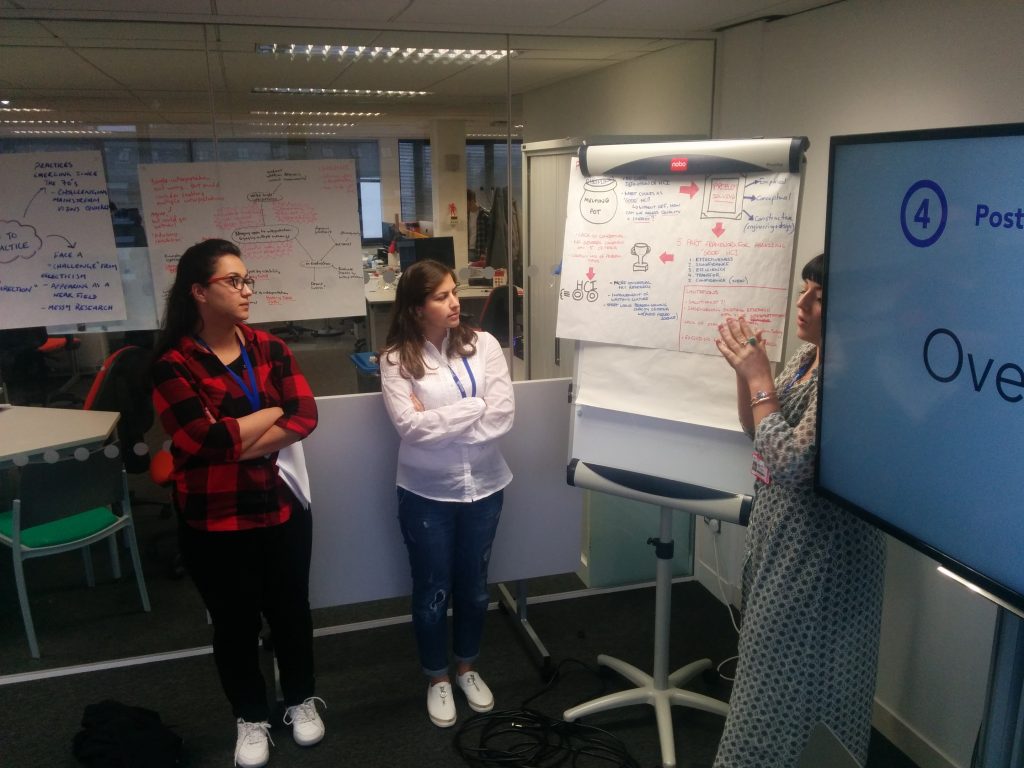
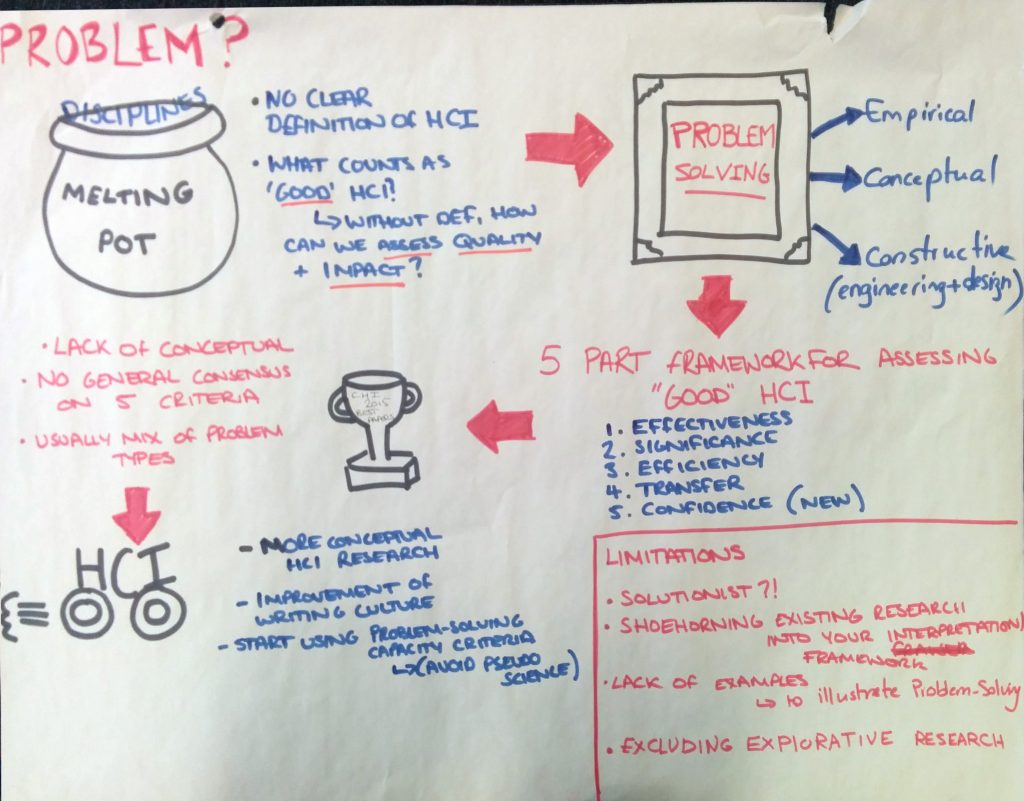
Group 3: Sebastian, Mohyddin and Tom (Human Computer Interaction as Science)
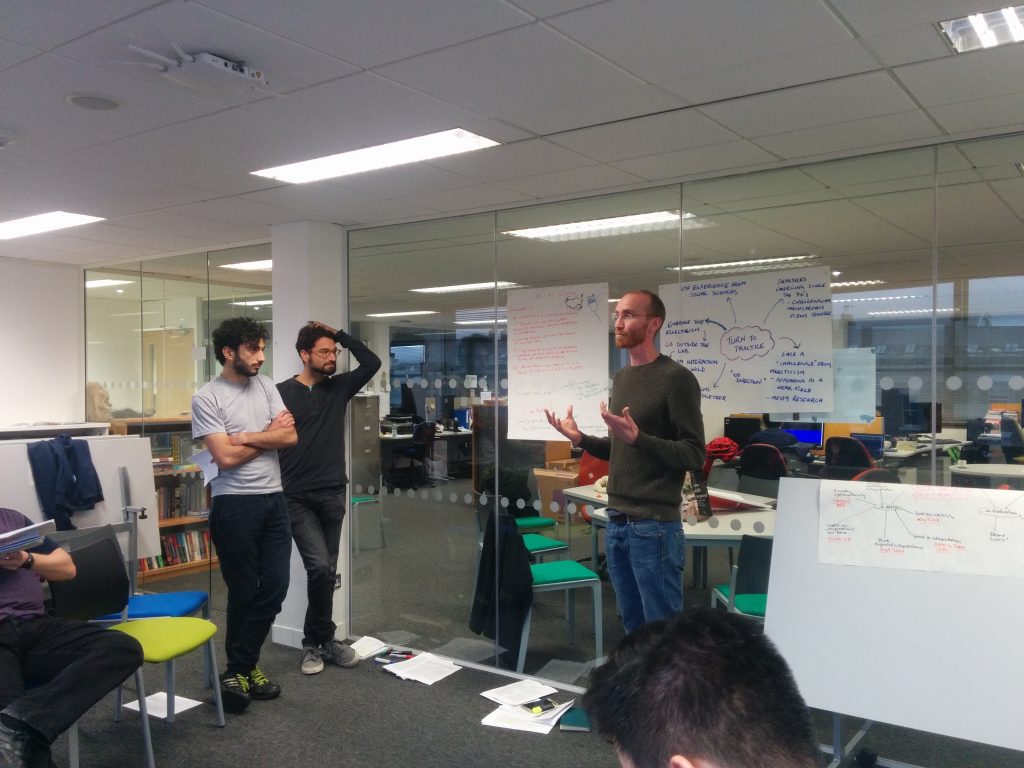
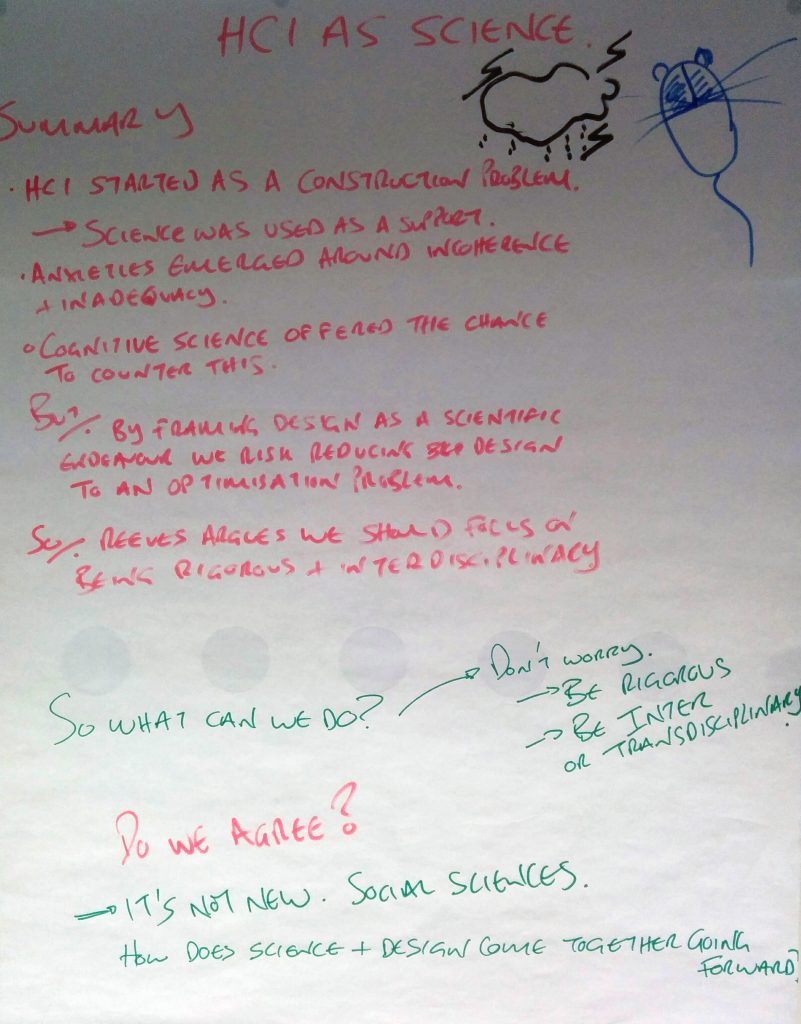
Group 4: Rosie, Dan and Dinislam (The Turn to Practice in HCI)
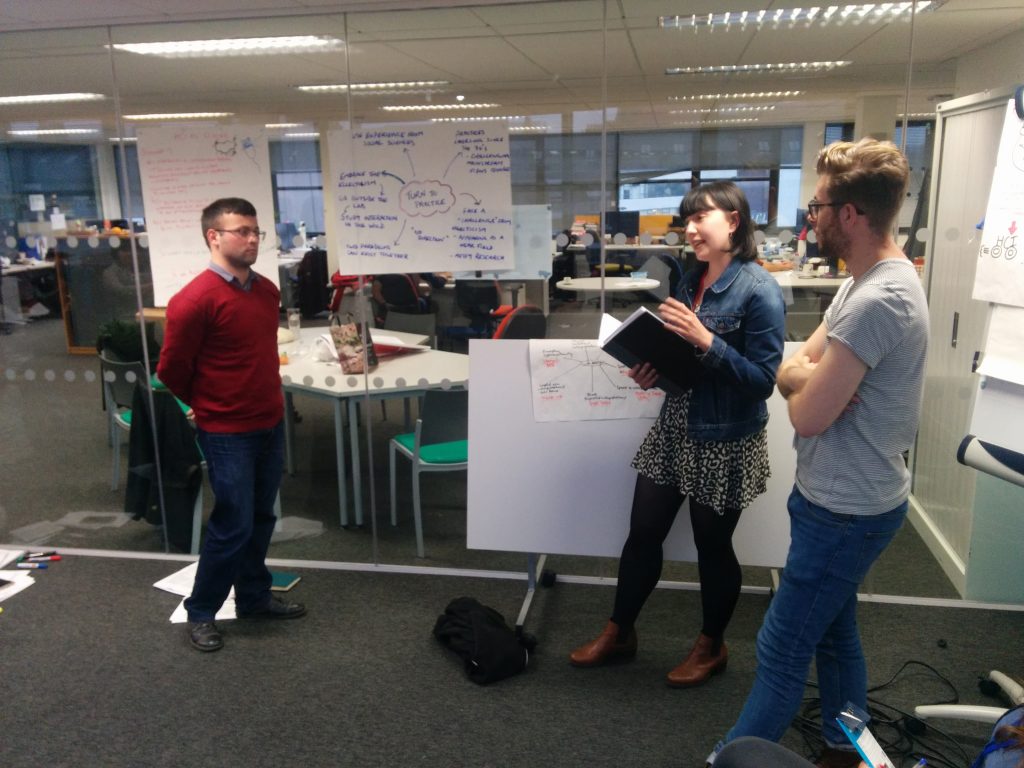
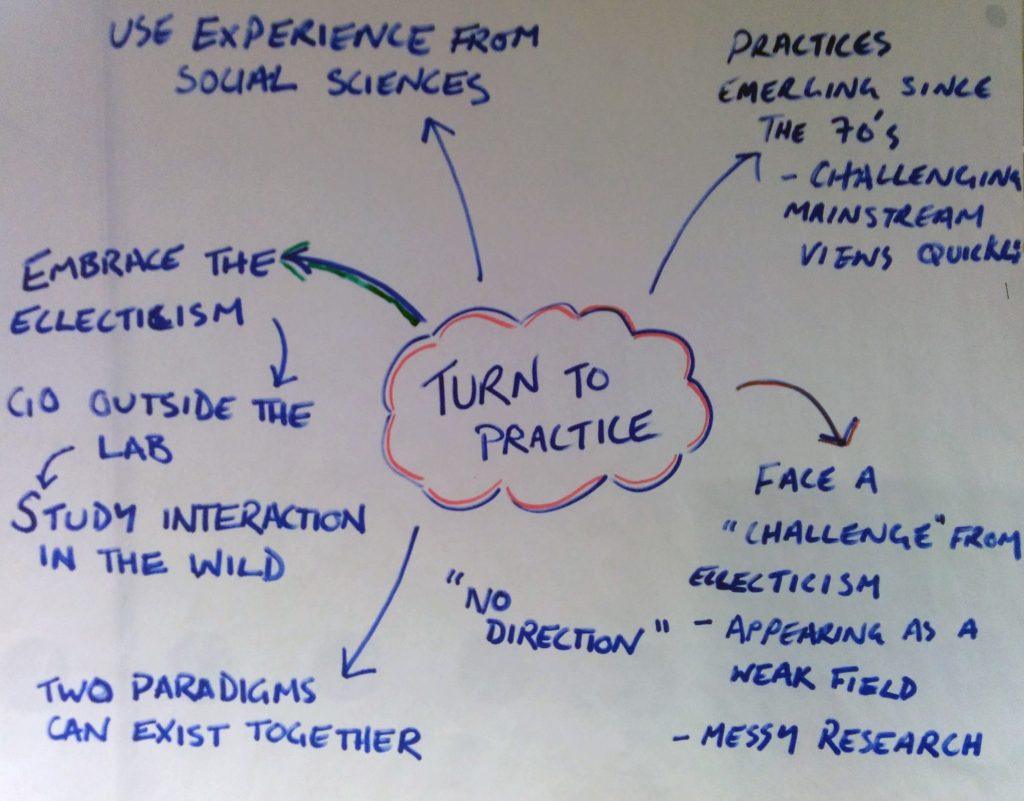
Tasks for Week 3:
At the end of this first session, you were asked to stay in your groups, and each group was given a different paper to read for the following week:
Group 1: Sean, Dalya, Tom (Structuring Future Social Relations)
Group 2: Lydia, Dan, Mohyddin (Evaluation in Participatory Design)
Group 3: Alex, Dinislam, Sarah (Participatory design and “democratizing innovation”)
Group 4: Rosie, Shichao, Sebastian (Empathy, Participatory Design and People with Dementia)
There are the normal tasks for next week’s session, plus one additional task:
As usual, you should (1) each individually read your set paper over the coming week, following the tips and tactics briefly discussed in this first session, and as detailed in the ‘Close and Critical Reading’ section of the Resources page.
After you have read the paper, (2) write an approximately 500 word blog post that is a critical review of the paper (again, use the materials sent around at the start of the module and on the Resources page as an initial guide to help) and upload this onto the website before we meet next week.
Then, (3) identify one paper that is a “good example of involving people in a design process”. You might want to search for terms like “participatory design”, “co-design” and “co-creation”. As before, make sure the paper is from one of the publication venues listed in the Resources page. Tell us what this paper is at the end of your blogpost, and bring a printed copy with you next week.
Finally, meet in your new reading group (which from now on will also be your “learning triangle”) and Gabber about this week’s session! Meet in your group and “Gabber” around three topics (you can choose these when you open the app). Don’t spend too long on this – just grab a tea or coffee, and chat for 20 minutes or so.